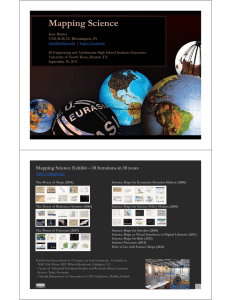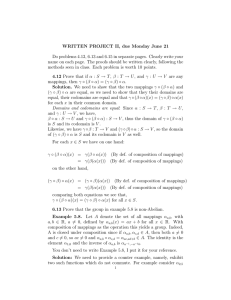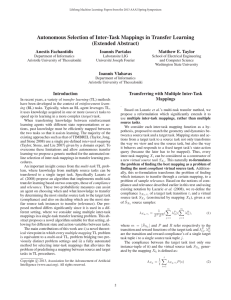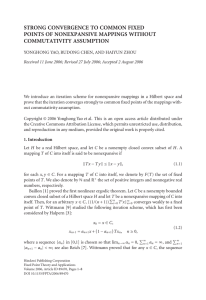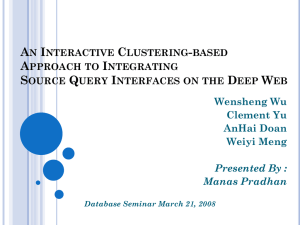Guest editorial
advertisement
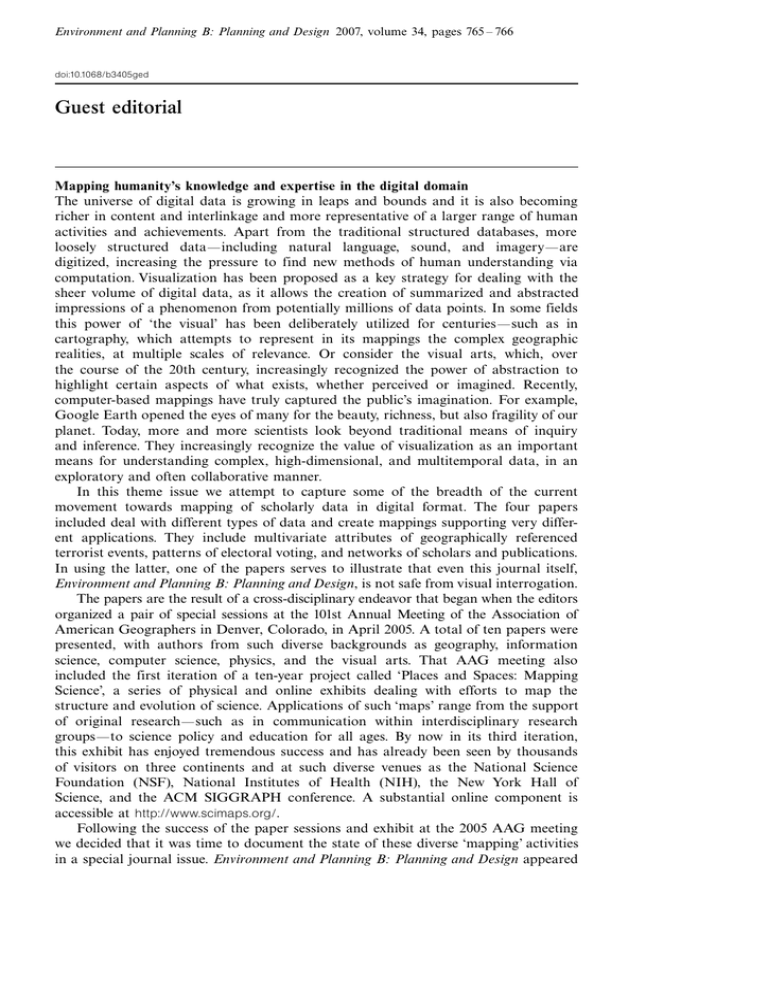
Environment and Planning B: Planning and Design 2007, volume 34, pages 765 ^ 766 doi:10.1068/b3405ged Guest editorial Mapping humanity's knowledge and expertise in the digital domain The universe of digital data is growing in leaps and bounds and it is also becoming richer in content and interlinkage and more representative of a larger range of human activities and achievements. Apart from the traditional structured databases, more loosely structured dataöincluding natural language, sound, and imageryöare digitized, increasing the pressure to find new methods of human understanding via computation. Visualization has been proposed as a key strategy for dealing with the sheer volume of digital data, as it allows the creation of summarized and abstracted impressions of a phenomenon from potentially millions of data points. In some fields this power of `the visual' has been deliberately utilized for centuries ösuch as in cartography, which attempts to represent in its mappings the complex geographic realities, at multiple scales of relevance. Or consider the visual arts, which, over the course of the 20th century, increasingly recognized the power of abstraction to highlight certain aspects of what exists, whether perceived or imagined. Recently, computer-based mappings have truly captured the public's imagination. For example, Google Earth opened the eyes of many for the beauty, richness, but also fragility of our planet. Today, more and more scientists look beyond traditional means of inquiry and inference. They increasingly recognize the value of visualization as an important means for understanding complex, high-dimensional, and multitemporal data, in an exploratory and often collaborative manner. In this theme issue we attempt to capture some of the breadth of the current movement towards mapping of scholarly data in digital format. The four papers included deal with different types of data and create mappings supporting very different applications. They include multivariate attributes of geographically referenced terrorist events, patterns of electoral voting, and networks of scholars and publications. In using the latter, one of the papers serves to illustrate that even this journal itself, Environment and Planning B: Planning and Design, is not safe from visual interrogation. The papers are the result of a cross-disciplinary endeavor that began when the editors organized a pair of special sessions at the 101st Annual Meeting of the Association of American Geographers in Denver, Colorado, in April 2005. A total of ten papers were presented, with authors from such diverse backgrounds as geography, information science, computer science, physics, and the visual arts. That AAG meeting also included the first iteration of a ten-year project called `Places and Spaces: Mapping Science', a series of physical and online exhibits dealing with efforts to map the structure and evolution of science. Applications of such `maps' range from the support of original researchösuch as in communication within interdisciplinary research groupsöto science policy and education for all ages. By now in its third iteration, this exhibit has enjoyed tremendous success and has already been seen by thousands of visitors on three continents and at such diverse venues as the National Science Foundation (NSF), National Institutes of Health (NIH), the New York Hall of Science, and the ACM SIGGRAPH conference. A substantial online component is accessible at http://www.scimaps.org/. Following the success of the paper sessions and exhibit at the 2005 AAG meeting we decided that it was time to document the state of these diverse `mapping' activities in a special journal issue. Environment and Planning B: Planning and Design appeared 766 Guest editorial to be a fitting interdisciplinary forum for this. A call for submission of papers was issued to all those already involved in the AAG sessions and exhibit, but was also distributed to other potential authors. In response, we received a total of ten full paper submissions, which underwent multiple levels of peer review resulting in the set of four papers now before you. Our hope is that the selection and sequence of papers will allow readers a glimpse of the exciting directions pursued in this area. Exploration is becoming the dominant paradigm in geovisualization, as is nicely illustrated in the paper by Diansheng Guo and colleagues, in which a number of different interactive tools are integrated and applied to a database of more than 27 000 terrorist incidents. The second paper, by researchers from the University of Zu«rich, readily falls under the heading of spatialization. They derive a political landscape of Switzerland from twenty years of popular referenda held in that country. Apart from an interesting series of transformations leading to visualization in a two-dimensional GIS-like display space, the resulting figures demonstrate how nongeoreferenced visualizations could be imbued with esthetic qualities traditionally associated with the most satisfying geographic maps. In the third paper one of the editors then gives an overview of different approaches to the visual analysis of scholarly knowledge. Specifically, it is demonstrated that the mapping of an emerging knowledge domain, such as network science, could be derived from such diverse data as a researcher's personal bibliography collections, self-reported collaborative links among researchers, or extracts from large citation databases. Such citation network data, analyzed at the journal level, also form the basis of Loet Leydesdorff 's analysis of Environment and Planning B: Planning and Design. Leydesdorff's analysis reveals this journal as being predominantly associated with the social sciences, yet providing an important interface to computer and information sciences. His contribution, much like the other three papers, entails a significant discussion of source data and methodology, which we hope will serve to make this special topic issue quite instructive for readers wishing to attempt their own mappings of scholarly knowledge and expertise. Andrë Skupin, San Diego State University Katy Bo«rner, Indiana University ß 2007 a Pion publication printed in Great Britain

